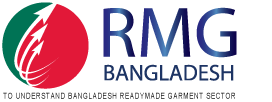Bangladesh’s readymade garment (RMG) exports posted a robust 10.84% year-on-year growth during the July-March period of FY2024–25, reaching $30.25 billion, according to the Export Promotion Bureau (EPB).
This impressive performance was largely fuelled by strong demand in traditional markets, particularly the European Union, the United States, the United Kingdom, and Canada, which continue to anchor the country’s export engine.
The EU alone accounted for 49.82% of total RMG exports during the period, with shipments worth $15.07 billion — an 11.31% increase from the same period last year, showed the latest data available on the EPB website early today (17 April).
The US, which is Bangladesh’s second-largest apparel market, registered even higher growth at 17.23%, with exports totalling $5.74 billion.
Exports to the UK and Canada stood at $3.36 billion and $963.85 million, respectively, with Canada posting a growth of 15.66% and the UK seeing a modest 4.14% rise.
“This growth reflects the resilience of our industry, especially in traditional markets,” said Faruque Hassan, former president of BGMEA.
“Our factories are investing in innovation, sustainability, and efficiency, which is giving buyers the confidence to increase their orders. We are also benefiting from global sourcing shifts, especially as brands look to diversify away from China,” he said.
The performance in key EU markets further illustrates Bangladesh’s competitiveness. Germany imported $3.80 billion worth of RMG goods, followed by Spain at $2.65 billion, France at $1.65 billion, the Netherlands at $1.61 billion, and Poland at $1.26 billion.
Growth rates in countries such as the Netherlands (23.15%), Sweden (19.96%), Denmark (12.80%), and France (10.75%) reflect an encouraging upward trend, particularly in environmentally and socially conscious markets.
Non-traditional markets also see rise
Although traditional markets remain dominant, Bangladesh’s RMG sector also witnessed a 6.66% rise in exports to non-traditional markets, totalling $5.12 billion — 16.93% of total exports.
Among these, Japan, Australia, and India stood out, with exports valued at $960.45 million, $653.64 million, and $535.15 million, respectively. Mexico and Turkey also showed remarkable performances, with growth rates of 23.44% and 32.54%, reflecting Bangladesh’s growing footprint in Latin America and Eurasia.
Despite these gains, exports to Russia, South Korea, the UAE, and Malaysia declined during the period, largely due to geopolitical instability and shifting trade dynamics.
The drop in Russia is attributed to ongoing war-related disruptions while declining shipments to the UAE, Malaysia, and South Korea indicate the need for a more strategic market engagement.
The export growth during this period has been supported by several interlinked developments. Bangladesh’s apparel industry has earned a reputation for environmentally sustainable manufacturing, backed by over 200 LEED-certified green factories.
Buyers are increasingly choosing Bangladesh not only for cost-effectiveness but also for ethical sourcing, social compliance, and the ability to meet evolving environmental standards.
At the same time, improved efficiency, workforce training, and investment in modern production technologies have strengthened the capacity to handle large-scale orders with shorter lead times.
“Buyers now look beyond just pricing — they’re prioritising sustainability, reliability, and social compliance,” said Faruque. “Bangladesh is ahead in all three areas, and that’s what’s driving long-term growth.”
US tariff concern
Despite the positive momentum, there are growing concerns about discussions in Washington regarding 37% reciprocal tariffs, which are now suspended for 90 days.
Currently, Bangladesh exports apparel to the US under a tariff regime that imposes duties ranging from 15% to 33% depending on the product category. On top of that, 10% additional tariffs have been recently imposed for all as per the US administration.
A shift towards reciprocal tariffs for countries without free trade agreements could increase these rates further, threatening Bangladesh’s competitiveness in its second-largest market.
“If tariffs increase further, it could put pressure on our competitiveness in the US market,” warned Mohiuddin Rubel, a former director of BGMEA. “We must engage diplomatically and push for a framework that ensures fair access, such as a new bilateral understanding.
“Otherwise, even the recent growth may not be sustainable.”
Faruque also emphasised the importance of diplomatic engagement. “We are already in dialogue with stakeholders in Washington to make the case that Bangladesh deserves better market access considering our progress in labour rights, factory safety, and sustainability.”
During the same period, knitwear continued to lead the sector’s performance, registering 11.22% growth, with particularly strong demand in traditional markets. Woven garments followed with 10.40% growth and performed notably well in several non-traditional markets.
The latest data reaffirms that traditional markets remain central to Bangladesh’s RMG success, but a balanced export strategy will require greater attention to emerging destinations.
















